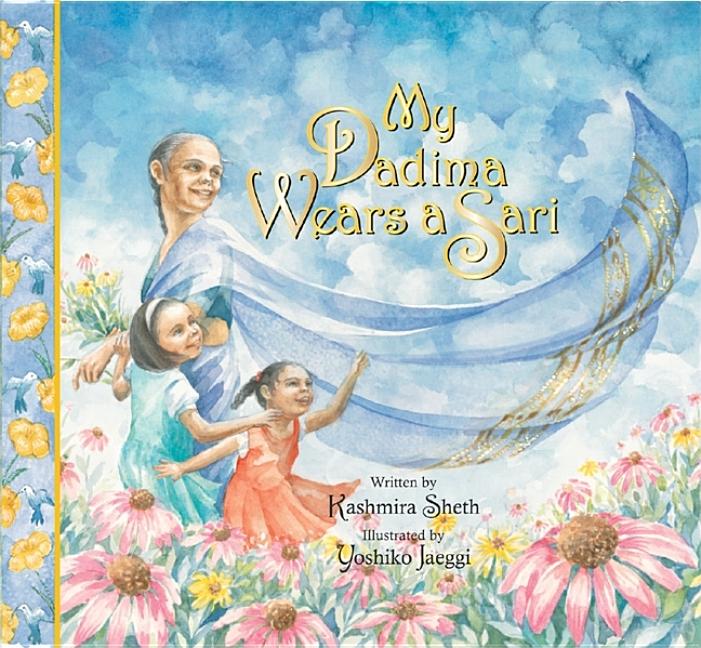Book Descriptions
for My Dadima Wears a Sari by Kashmira Sheth and Yoshiko Jaeggi
From Cooperative Children's Book Center (CCBC)
Rupa’s grandma never wears pants or dresses or skirts. She wears a sari every day. “Your saris are beautiful, Dadima . . . but don’t you get tired of wearing them?” Dadima explains many things she can do with her sari: the fabric can be a fan if it’s hot, or an umbrella if it starts to rain; she can carry shells she collects on the beach; and Rupa and her little sister, Neha, can play hide-and-seek in its folds. Her saris also tell stories: “I wore this sari on the plan when I came from India to America . . . this is my wedding sari.” The warm relationship between two girls and their grandmother is at the heart of Kashmira Sheth’s lyrical story grounded in details full of child appeal. The two little girls may not yet fully understand the cultural heritage and family history their Dadima is sharing, but they do fully appreciate the delight of dressing up in Dadima’s saris, and the love with which both hers saris and her stories are shared. (Ages 4–8)
CCBC Choices 2008. © Cooperative Children's Book Center, Univ. of Wisconsin - Madison, 2008. Used with permission.
From the Publisher
An Indian grandmother and her American granddaughter explore culture, imagination, and individuality through a collection of saris.
Every day, Rupa's grandmother wears a beautiful Indian sari. Each is brightly colored and very pretty. "Don't you ever want to wear a gray skirt and red blouse with round buttons like Mommy or a green dress like me?" Rupa asks. But Dadima prefers to wear her traditional saris.
Dadima shares all the wonderful things that saris can do—from becoming an umbrella in a rainstorm to providing a deep pouch to carry seashells. Soon Rupa's own imagination is sparked as she envisions saris protecting her in the scary Gir Jungle, bandaging up an injured knee, and holding a special secret for her and Dadima to share.
Kashmira Sheth provides a warm, unique peek into Indian culture in this sensitive portrait of a grandmother and her American granddaughter. Hindi words defined and sprinkled throughout the text further add to the story's authenticity.
Yoshiko Jaeggi's sweeping, colorful, and fanciful watercolor illustrations capture the extraordinary bond of love that unites families across generations and cultures. A note from the author and instructions for wrapping a sari are included.
Every day, Rupa's grandmother wears a beautiful Indian sari. Each is brightly colored and very pretty. "Don't you ever want to wear a gray skirt and red blouse with round buttons like Mommy or a green dress like me?" Rupa asks. But Dadima prefers to wear her traditional saris.
Dadima shares all the wonderful things that saris can do—from becoming an umbrella in a rainstorm to providing a deep pouch to carry seashells. Soon Rupa's own imagination is sparked as she envisions saris protecting her in the scary Gir Jungle, bandaging up an injured knee, and holding a special secret for her and Dadima to share.
Kashmira Sheth provides a warm, unique peek into Indian culture in this sensitive portrait of a grandmother and her American granddaughter. Hindi words defined and sprinkled throughout the text further add to the story's authenticity.
Yoshiko Jaeggi's sweeping, colorful, and fanciful watercolor illustrations capture the extraordinary bond of love that unites families across generations and cultures. A note from the author and instructions for wrapping a sari are included.
Publisher description retrieved from Google Books.


